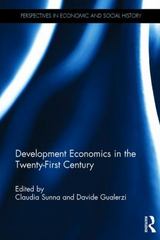Question
Section B: Short Answer Students are to select one (1) of the two (2) options for each of the following 3 Questions. For example, choose
Section B: Short Answer
Students are to select one (1) of the two (2) options for each of the following 3 Questions. For example, choose either Question 1a or Question 1b. Each question answered is worth 10 marks for a total of 30 marks for this section. Answer each question on a new page in the script book provided.
Question 1a: Price floors
In the 1970's the Australian government instituted a floor price for wool, called the Reserve Price Scheme. This was designed to guarantee Australian wool farmers a 'fair' price for their products.
- Show the effects of such a price floor on a demand and supply diagram, and explain in writing. (5 marks)
- Explain the impact of this policy on efficiency. You will need to consider consumer surplus, consumer surplus and deadweight loss. (5 marks)
OR
Question 1b: Elasticity
- How do the elasticities of demand and supply tend to differ from the short run to the long run? What are other some others factors that determine whether the price elasticity of demand is elastic or inelastic? (4 marks)
- Using diagrams, show how elasticity of demand influences the impacts of the imposition of a tax on producers. Why might consideration of the price elasticity of demand be important in considering which products to tax? (6 marks)
Question 2a: Perfect competition
- Explain why a perfectly competitive firm cannot influence its price. (2 marks)
- Illustrate with a diagram, and explain in words, a situation where a perfectly competitive firm is experiencing economic profits. (4 marks)
- Taking into consideration the entire market, show how it is impossible for a perfectly competitive firm to experience economic profits in the long run. (Hint, you will need to show diagrams for the firm and the market as a whole). (4 marks)
OR
Question 2b: Monopoly
- Illustrate with a diagram, and explain in words, how a monopoly determines the profit maximising level of output. (5 marks)
- Given that a monopolist faces no competition, what prevents it from raising prices as high as it wishes in order to make more profits? (2 marks)
- Explain the efficiency implications of a monopoly in comparison with a perfectly competitive firm. (3 marks)
Question 3a.Gross Domestic Product and economic growth
- Explain how Gross Domestic Product is calculated and used to measure changes in living standards over time. (3 marks)
- GDP is considered a good measure of economic wellbeing. However, GDP is not a perfect measure of wellbeing. Why? (4 marks)
- What factors lead to a sustained increase in GDP over time? Explain. (3 marks)
OR
3b. Unemployment and inflation
- What are the three types of unemployment and how do they change over the business cycle? (5 marks)
- What is inflation and how is it measured using the Consumer Price Index? (2 marks)
- Explain the difference between a nominal value and a real value. What is the difference between real and nominal interest rates? (3 marks)
Step by Step Solution
There are 3 Steps involved in it
Step: 1

Get Instant Access to Expert-Tailored Solutions
See step-by-step solutions with expert insights and AI powered tools for academic success
Step: 2

Step: 3

Ace Your Homework with AI
Get the answers you need in no time with our AI-driven, step-by-step assistance
Get Started


